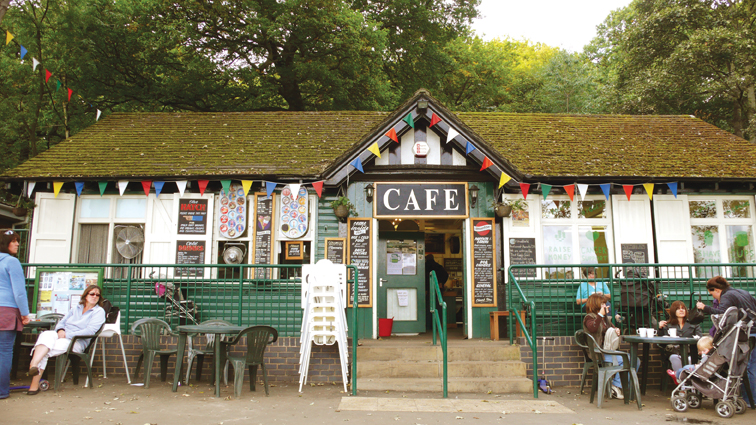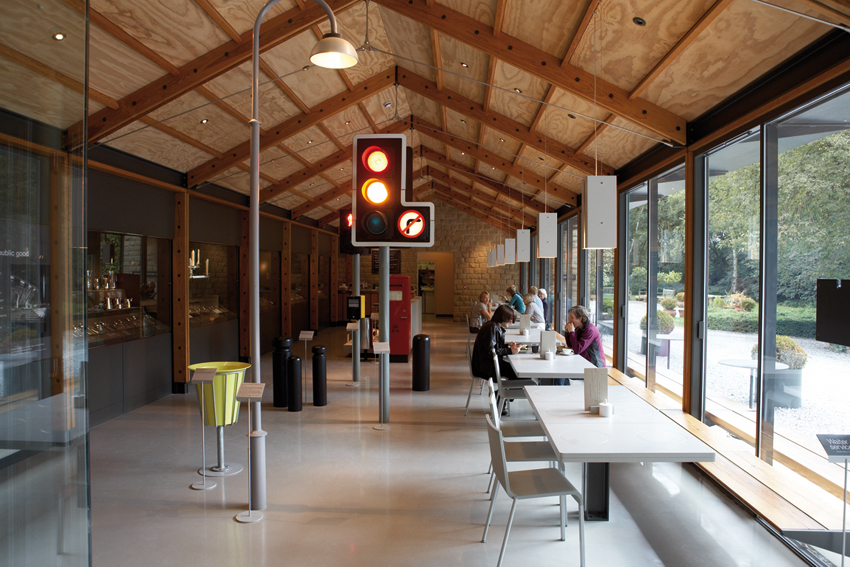Paul Boag will be giving a plenary talk for us on No money? No matter – Improve your website with next to no cash. Here are his controversial thoughts on hiring a Web design agency…
No plans to redesign your site?
Now is the time to hire a web design agency
Many website owners hire their web design agency at the wrong time. Instead of hiring a web designer when you need work done, hire them when you don’t!
Traditionally website owners hire a web design agency when they are unhappy with their website and have the budget to do something about it. However, I have come to believe that the best time to hire a web design agency is when budgets are tight and you are reasonably happy with your website.
Am I mad? Well, possibly. However, let me explain my logic.
Flaws with the traditional model

prodakszyn, Shutterstock
My madness began with a belief that the current way most website owners engage with web design agencies is wrong. Normally things work something like this…
- The website owner becomes unhappy with his site and decides things need to change.
- He concludes the site needs redesigning and so writes a brief before asks web agencies to pitch for the work.
- The agencies respond and one is selected for a expensive redesign of the site.
- The agency throws out the old site and builds a new one.
- The website owner pays the web agency and they go their separate ways.
- Slowly the site decays as the business changes and new features/content is added.
- Sometime later the website owner becomes dissatisfied again and the process repeats.
This approach of sporadic redesign is flawed for a number of reasons…
- It is wasteful because it throws out the old site and begins again every few years.
- It is financial painful as a considerable budget has to be found for each redesign.
- The website owner defines the project alone without the advice and support of a web expert.
- The user is confused by a dramatic change in the website. This often causes hostility (take for example the campaign against Facebook’s redesign).
- Choosing the right agency is a huge risk thanks to the large financial commitment involved.
- The chosen agency lacks the in-depth knowledge of the business required to create a successful website.
- The site quickly degrades as the business begins to add new content and features. This means that for much of its life the site reflects badly on the business.
Surely there is a better way.
Working in long term partnership
The answer is for the website owner and web agency to work in a much more fluid, dynamic and ongoing relationship. This solves a lot of the problems with the existing system.
Instead of sporadic redesign with its intrinsic waste and enormous one off expenditure, you have an ongoing development process that is constantly tweaking and evolving the website.
Because both parties are working together regularly it gives the agency a chance to really understand the business drivers for the website and how the web can help meet organisational needs.
In turn it gives the website owner the opportunity to build confidence in the agency, so the next time a big project come along there is no risky decision about selecting a supplier.
Most importantly this partnership ensures the website is constantly being given attention, and that the website owner has an outside perspective when making crucial decisions. It also allows him to benefit from the agencies expertise and experiences cultivated from working on other sites.
Of course some of you may have an in-house team that fulfils this role. However do they really?
But we have an in-house team
In theory if you have an in-house web team there should be no need for a web agency who provides an ongoing collaborative role. However in my experience there is a big difference between theory and practice.
Most of the web teams I encounter are unable to fulfil this role for two reasons that are entirely beyond their control…
They are overworked
I am yet to encounter a web team who are not overworked. They are developing new features, dealing with support queries, adding new content and doing endless day-to-day tasks that prevent them from looking at their website from a strategic viewpoint.
Having an outside expert with whom they can discuss the future direction of their site is invaluable. Not only does it help maintain a broad vision, it also ensures that things stay on track and strategy doesn’t get crowded out by day-to-day details.
Let me give you an example. At Headscape we have an outside advisor called Brian who joins us at our board meetings. He serves three roles…
- He provides an outside perspective that comes from working with many different companies like our own.
- He forces us to look strategically at our business rather than discussing the delivery of our latest piece of client work.
- He holds us accountable and will challenge us if we fail to do what has been agreed at previous meetings.
I would argue that every web team needs somebody like Brian.
They miss design details
Most web teams don’t have a full time designer. They are normally made up of content people, project managers and techies. In some way this is understandable. Once a design is set it normally doesn’t need to change very much.
However with the web team focused on content and features there is nobody ensuring the design is maintained. Changes to a website can undermines the consistency in a design that makes a website trustworthy. Suddenly things stop lining up, buttons are styled in different ways and the slick professional feel falls away.
It is also important to remember that design dates very quickly online because of the speed of innovation. It’s therefore important that somebody is keeping an eye on these design details if a major periodic redesign is to be avoided.
So presuming I have sold you on this alternative approach, how does it work practically?
How it works in practice
The key to this approach is one lifted from agile development and is built around a monthly meeting.
Whether our meeting needs to be monthly, weekly or quarterly is entirely up to you. That decision should be based on how much your website changes. For a busy website that is continually being developed you will need frequent reviews. For a more informational site that rarely changes, once a quarter maybe enough. What matters is that the meetings are regular.
The meeting themselves will focus on two areas.
Strategic aims – These meetings are a chance to step back and look at the bigger picture of what you are trying to achieve through the site. This discussion may raise questions (such as what is the competition doing?) or it may identify weaknesses that need addressing. However, whatever the case it is an opportunity to get out of the trenches and see the bigger picture.
Immediate goals – Each meeting should end with a series of immediate goals that need to be achieved before the next meeting. These are practical ‘next step’ actions. They might include a review of the competition or an A/B test on some piece of content. The point is to have some concrete ways of achieving the more strategic goals.
Some of the work to be done will fall to the outside agency, others to the website owner. There may also be times when a third party is required for certain work. Whoever does the work it has to be completed by the next meeting.
This timescale constraint prevents large, time consuming projects that often stall or slip. Instead each development cycle will focus on a few quick fixes.
At the next meeting the actions are reviewed to see if they have been completed before the next steps are set. Once that is done the next meeting is scheduled… and so on.
No strings attached
What is great about this ‘one development cycle at a time’ approach is that it limits the commitment the website owner have towards their agency. If the website owner wished, they could have a single session with an agency and decide never to schedule another meeting if they particularly disliked them.
Equally they could schedule a few meetings and then swap to another agency to gain fresh perspective if the original agency is not coming up with the goods.
Finally, they could choose not to use the web agency for all the work within a development cycle, but to do most of it in-house or even use a student!
There is no contract and no massive expenditure. It is the cost of the next meeting and nothing more.
Of course this is also great in the current economy where management is carefully controlling expenditure. Getting a large redesign approved maybe impossible. However, paying for an hour long meeting once a month is more achievable. The website owner gets all of the expertise of an outside agency, without the long term commitment or big budgets.
Take the first step today
The great thing about this approach is that you can start it today, even if you have no redesign planned and no real budget for your site.
If you have an existing web design agency, give them a call and ask whether you can schedule the first of a monthly meeting to discuss your website. Explain that you are happy to pay for their time, but you want to keep things light weight and flexible. Chances are they will be willing to accommodate you. If they or not, then perhaps it is time to look elsewhere.













